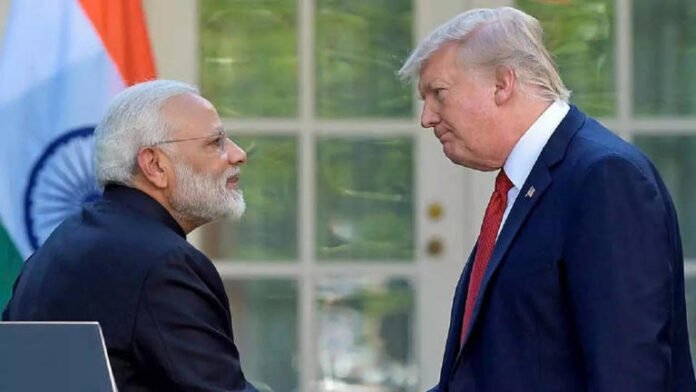As global trade tensions escalate, India is preparing to navigate a critical diplomatic and economic challenge: dealing with potential tariff threats from the United States. With the much-anticipated meeting between Prime Minister Narendra Modi and former U.S. President Donald Trump on the horizon, all eyes are on how India will respond to any trade pressures while safeguarding its economic interests.
The Tariff Challenge: A Recurring Trade Dispute
Over the years, India and the U.S. have shared a dynamic yet occasionally strained trade relationship. Tariff-related issues have often dominated discussions, with the U.S. pressing India to reduce duties on American goods, especially in sectors like agriculture, medical devices, and technology. In return, India has expressed concerns over the U.S. imposing higher tariffs on Indian exports, particularly steel, aluminum, and textile products.
With Trump’s potential return to power, the prospect of renewed tariff disputes has re-emerged. During his presidency, Trump pushed for a more protectionist trade policy, withdrawing India’s Generalized System of Preferences (GSP) status in 2019, which had previously allowed duty-free exports of certain Indian goods to the U.S. The upcoming meeting could shape the future of bilateral trade ties and determine whether India faces additional tariff impositions or gains concessions.
India’s Strategy: A Multi-Faceted Plan
Anticipating potential challenges, India has devised a robust trade strategy aimed at mitigating tariff risks while fostering stronger economic engagement with the U.S. Key elements of this plan include:
1. Strengthening Alternative Trade Alliances
India has been actively diversifying its trade partnerships by strengthening economic ties with the European Union, the UAE, Australia, and Southeast Asian nations. Through free trade agreements (FTAs) and strategic partnerships, India is reducing its reliance on any single market, making it less vulnerable to U.S. tariff threats.
2. Incentivizing Domestic Manufacturing
To counterbalance the impact of tariffs, the Modi government has intensified efforts to boost domestic manufacturing under the ‘Make in India’ and ‘Atmanirbhar Bharat’ initiatives. By reducing dependence on imports and strengthening local industries, India is positioning itself to withstand trade shocks and expand its export capabilities.
3. Bilateral Negotiations and Trade Concessions
India is expected to push for the reinstatement of its GSP status while negotiating lower tariffs on key exports like pharmaceuticals, textiles, and information technology services. In return, India may consider reducing duties on certain U.S. goods, such as high-tech products and agricultural commodities, to facilitate a balanced trade agreement.
4. Leveraging the U.S.-India Strategic Partnership
Trade tensions aside, India and the U.S. share a strong strategic partnership, particularly in defense, technology, and geopolitics. India is likely to leverage these ties to ensure that trade negotiations remain constructive, highlighting shared interests in countering China’s economic dominance and fostering supply chain resilience.
What to Expect from the Modi-Trump Meeting
As Modi and Trump prepare to meet, trade discussions are expected to be high on the agenda. Key issues that could shape the dialogue include:
- Tariff Reduction Talks: India will push for a rollback of any proposed tariff hikes while seeking preferential trade terms for key export sectors.
- Investment and Job Creation: Modi may emphasize India’s role as a major destination for American investments, especially in technology and manufacturing, to highlight the mutual benefits of stronger trade ties.
- Energy and Defense Agreements: Given India’s growing energy needs and its strategic defense partnerships with the U.S., negotiations may include potential deals in these sectors to strengthen economic ties beyond trade.
The Road Ahead: A Balancing Act
While tariff threats pose a challenge, India is well-prepared with a strategic approach that blends negotiation, economic diversification, and domestic industrial growth. The outcome of the Modi-Trump meeting will be crucial in shaping the future trajectory of India-U.S. trade relations.
Regardless of the immediate results, India’s proactive stance ensures that it remains resilient against potential trade disruptions. By adopting a multi-pronged approach, India is not just reacting to tariff threats but positioning itself as a formidable player in global trade dynamics.
As the world watches, the Modi-Trump meeting stands as a pivotal moment in determining whether trade tensions escalate or if a new era of economic collaboration unfolds between the two nations.

